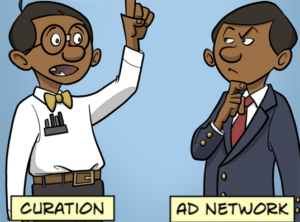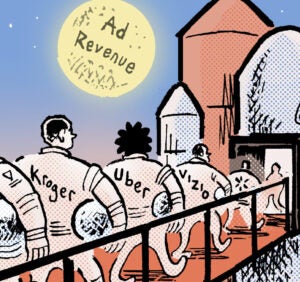 “Data-Driven Thinking” is written by members of the media community and contains fresh ideas on the digital revolution in media.
“Data-Driven Thinking” is written by members of the media community and contains fresh ideas on the digital revolution in media.
Today’s column is written by Alistair Goodman, CEO at Placecast.
In the world of mobile marketing, geofencing has become the lingua franca for agency buyers, retailers, techies and data analysts.
Everyone understands the idea of putting a “magical” virtual polygon around a place that sends stuff to consumers’ phones based on where they have been, where they are, when they are there and the things in which they have anonymously expressed interest.
However, all geofences are not created equal. Using a static geofence diminishes the very power of using location data in a mobile marketing campaign.
Think about a busy place you know, such as the downtown area of a major metropolitan city. Is it the same “place” at 2 p.m. on a Tuesday as at 10 p.m. on a Saturday? The buildings are the same, but that may pretty much be it.
The people could be really different, and the density and activity is likely different, such as people working in office buildings versus people visiting bars and restaurants. And even if they are the same people, they are likely in vastly different mindsets.
Never mind what happens to this location at rush hour or when it rains. You get my point: Place profiles are dynamic.
For example, if a casual dining restaurant group wants to “own” food promotion on mobile in that downtown area, would it simply geofence the restaurants and let fly with its campaign? Or would it want to harness the power of location to increase the relevancy and performance of its campaign?
If it just set the geofences at a block or two, it would only see average performance. I’d imagine a foot traffic analysis would indicate that the company should set bigger geofences for promoting dinner versus lunchtime. Maybe the geofence size could be increased to include the baseball stadium during game time so it captures post-game traffic. A small geofence around a transit hub may provide a good reminder during commuting hours. Or maybe a park that is a favorite spot for lunch when the weather is nice calls for a custom geofence around its border. And maybe on the weekend, geofences become larger because there are more out-of-towners and tourists wandering around.
If marketers simply set geofences and run a campaign without optimizing, they lose out on all the benefits of places over time. In my experience, it’s possible to boost lift in performance by most measures – awareness, clicks, store visits – by as much as 50% by actively optimizing geofencing strategy on a mobile-location campaign.
Added benefits of dynamic geofencing: The data collected can be turned into insights and the ability to run retargeting campaigns. Understanding the dynamics of how a place and brand are related over time, and what ultimately drives foot traffic, can be harnessed for future campaigns. This includes the ability to retarget those users at another point in time, such as when they are home watching a TV ad for your brand.
Good geofencing strategy yields not only benefits for a current mobile campaign, but also a qualified audience for future campaigns.
Follow Placecast (@placecast) and AdExchanger (@adexchanger) on Twitter.













